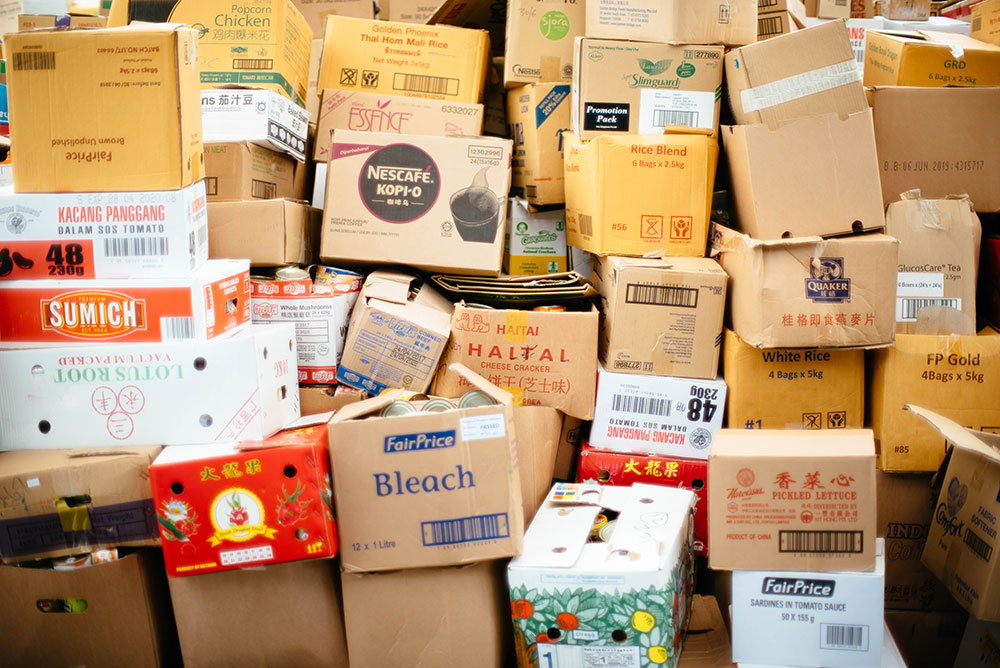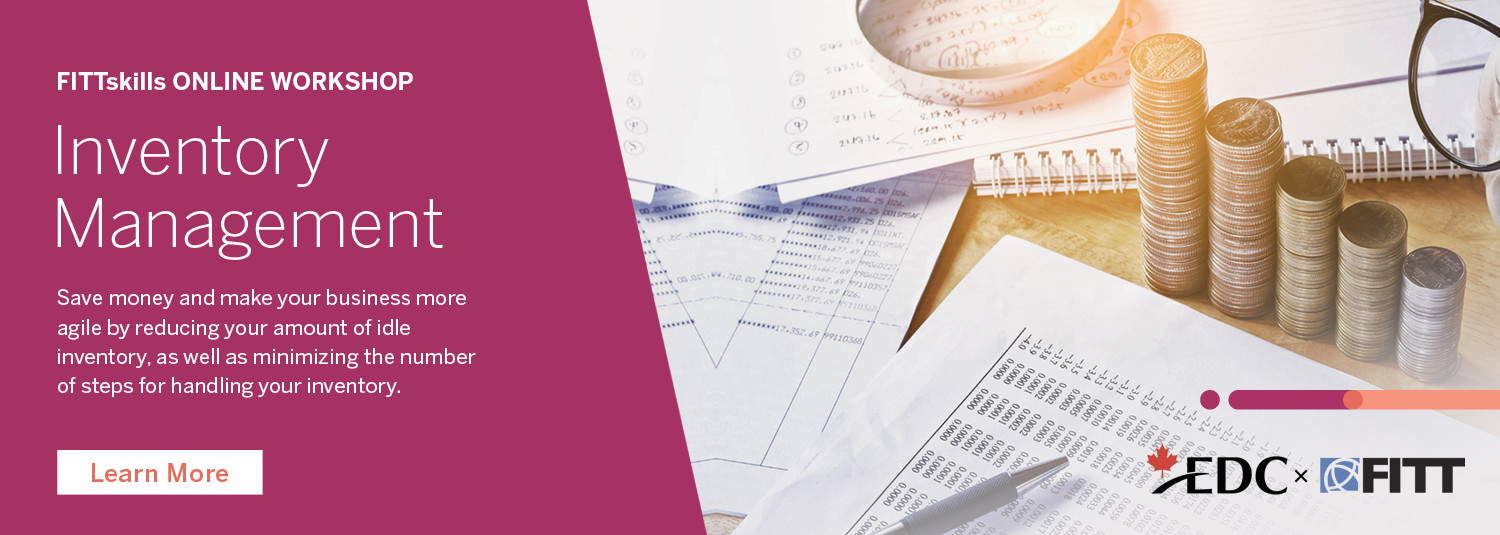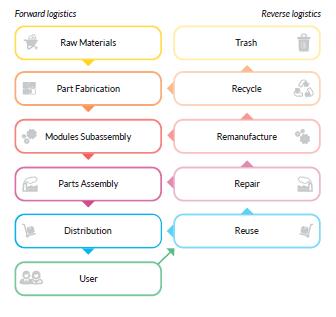
The traditional consumption linear supply chain model of the “make, buy, throw away” lifestyle of the 1950’s underwent a societal value shift when governments around the world, recognizing the growing issues with landfills, enacted legislation for waste management.
This resulted in the development of reduce, reuse and recycle programs. Regulations and consumer awareness have businesses adopting reuse and recycling practices and examining the potential value that could be gained from managing product returns.
The same capabilities used in the forward supply chain can’t be leveraged in reverse logistics…reverse logistics requires different processes, technology, capabilities, and expertise. It’s more of a network model.
Reverse supply chain, also referred to as reverse logistics, is the process of planning, implementing and controlling the collection of products and packaging, post-consumer, in order to recover value and optimize potential benefits for the organization. The forward supply chain may use the reverse supply chain to handle problem inventory.
1. Experience
Today’s forward supply chain has grown in complexity with offshoring, outsourcing, strategic procurement and inventory management innovations. This innovative mindset has been applied to an increasingly sophisticated reverse supply chain.
Today’s businesses are obtaining value and changing practices to control what happens to their products after customer/consumer use. Product components or finished products are collected, sorted and returned to suppliers, manufacturers or retailers. Reverse supply chains close the loop with forward supply chains, giving rise to what is now being referred to as circular supply chains.
Effective reverse logistics can also be critically important when organizations need to recall a product. Organizations are obligated to manage product recalls when a product poses an unacceptable risk to consumer health or safety, or fails to comply with legislation, such as labelling. Managing recalls can be costly. A good recall process mitigates risk and maximizes the efficiency of product removal from the market.
Effective product return strategies and programs can result in increased revenues, lower costs, improved profitability and enhanced levels of customer service.
Companies can ensure good customer service and cut the costs associated with product returns by establishing returns policies and strategies.
Suppliers that provide raw materials or components will have products returned because they do not meet the specifications of their customers. Typically, terms of returns of raw materials or components from suppliers are negotiated in procurement contracts.
Want to learn more about how to improve your decision making when you build inventory systems that will give you all the data you need? Check out the FITTskills Inventory Management online workshop!
Establishing effective product return systems
Reverse logistics involves the process of negotiating, developing and implementing the means for products to be returned for repair, refurbishment, recycling or disposal. In reverse logistics, businesses do not initiate the logistics flow; it is activated by the actions of consumers or other downstream channels.
Organizations must establish a return system that is consistent with business aims in order to optimize resources, manage assets and ultimately ensure profitability.
Organizations must examine the social environment and consider consumer preferences and service expectations. A sustainable return system will include waste reduction strategies, such as redesigned packaging that uses less material and improves on shipping efficiencies, or determining a process that minimizes the number of transit points for return sand identifying returns that can be resold or repurposed.
There are several considerations that inform the policies and procedures that an organization will implement to manage product returns:
Organizational priorities or goals, for example:
- Cost reduction
- Risk reduction or mitigation
- Responses to environmental concerns or consumer demands
- Warrantee management cost improvements
Compliance with legislation or regulations regarding disposal, recycling, anti-dumping or recalls
Activities or strategies to address needs and minimize risks, for example:
- Inventory management systems, e.g. policies, administrative procedures, supporting technology, warehousing
- Customer support and fulfilment services, including refund procedures
- Quality control procedures
- Skills training for staff associated with sales and services, inventory management, quality control and others
Current capacity or abilities, and return strategies that will meet needs, including:
- Outsourcing return services to a third party provider
- Establishing return centres
- Arranging for warehousing
- Using liquidation and discount sellers
- Arranging for clearance of out dated stock
- Offering disposal and credit for expired stock
- Screening or sorting services
- Repair services
- Transportation requirements, e.g. for warrantee claims, salvage materials, resalable products
- Availability of refund on duties paid for export products, i.e. drawbacks
What’s your return policy?
When an organization accepts a return, it must have a policy for either refunding the price of the product or issuing a credit to be used against future purchases. The policy that is decided on will depend on the organization’s financial status, size, customer and business strategy.
Customers prefer a straight refund, but smaller companies might not be able to provide this, especially if the number of returns in an accounting period is much larger than anticipated.
Where a company is dealing with a large customer, such as a retailer, logging a credit against a future order or making a direct bank transfer are the easiest methods of refunding the cost of the returned products. The actual amounts to be refunded and the refund method must be defined in contracts that are negotiated between companies and the customers they are supplying.
When individual customers must be refunded, the method by which a refund is provided is determined by how the customer paid for the item. Companies may charge a handling or shipping fee. Customers should be informed of this and of the estimated time lag between submitting a product for refund and dispatch of the payment. This lag time will enable the company to examine the product to ensure it was returned legitimately and to process the payment.
Innovations in reverse logistics have some organizations working proactively with customers for asset retirement. These organizations provide opportunities for customers to bring back their old product and receive a payment that can be put towards the purchase of a new product. The retired product can be used for parts or refurbished and resold.








disqus comments